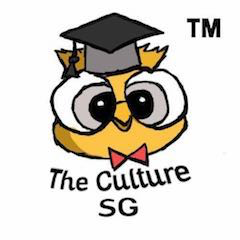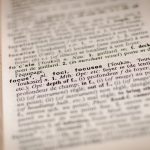Between the 1960s and 1990s, there has been a strong perception that the arts were an abstract waste of time. More focus was invested on STEM – science, technology, engineering and mathematics – to boost the value of each worker and compensate for our geographical disadvantage. Recently, the Singapore government revealed that  822 million in 2003 to $1.28 billion in 2010. The arts have been playing a larger role in the building the Singapore economy, justifying the money spent to promote the arts among the younger generation.
822 million in 2003 to $1.28 billion in 2010. The arts have been playing a larger role in the building the Singapore economy, justifying the money spent to promote the arts among the younger generation.
The arts play a vital role in encouraging Singaporeans to have a sense of belonging and pride towards their homeland. Sir Julian Huxley once said that art is “the effective organization of experience into integrated forms which are emotionally significant and aesthetically satisfying”. Art can be used to document human progress. The number of museums in Singapore has increased from 28 in 2004 to 58 in 2015, including the newly inaugurated National Art Gallery. The Ministry of Culture, Community and Youth (MCCY) stated that more Singaporeans are embracing the arts as visitor ship to national museums and heritage institutions reached 3.2 million in 2013. Museum and heritage centers hold great value in our society. They are visual evidence of the developments Singapore has undergone through the years. The fact that more people are willing to visit these heritage centers correlates to the improvement of national identity. People will be better equipped with knowledge about the hardships their pioneers had to go through. They will be given the opportunity to learn from the past mistakes and experiences. The amount of money spent to preserve the history of Singapore is justifiable, as the future generations will be allowed to learn about their homeland’s humble beginnings.
Using the arts, Singapore is able to build and maintain its reputation in the world affairs. The diversity and scale of arts-related events and exhibitions in Singapore demonstrate the vibrancy of the arts scene and, in particular, how Singapore is a place for cultural exchange and collaboration for the global arts community. The National Arts Council initiated Art Week in 2013, to ride on the momentum of the growing visual arts scene. They include the growth of Art Stage and the launch of the art gallery cluster and NTU Centre for Contemporary Art. Singapore is drawing attention from all around the world, and many are willing to take part in this international fair. Countries will be able to gather in Singapore and establish long-term relationships between their art sectors and communities, on a larger scale. Singapore presents itself as an arts hub platform. Other countries will begin to notice the potential of the tiny red dot, known as Singapore. They will be willing to be our allies and possibly, involve in our trade and economy. Being as arts hub introduces many opportunities for Singapore to improve regional and international ties, as well as, boost its economy. This benefit proves that the arts warrant the large amount of money spent to support international fairs.
The arts are a form of universal language and expression. Singapore has a rapidly ageing population and is well known to be the home for multiple races and religions. The arts can be used to bring people of different backgrounds and walks of life together, and motivate them to share their experiences and cultures with each other. In July 2015, there was a special concert put together by creative director of New Creation Church KC Gan, titled “Harmony In Diversity”. This concert brings together Singapore’s 10 major religions and 4 main races. The medium of a concert, with colorful songs and dances, was used to promote racial harmony, as it is likely to be enjoyable and have a wider reach to the public. Moreover, since the arts do not require physical fitness, the elderly can also be involved to encourage inter generational bonding. Similar to the workshop “Sounds Like Fun!” organized by Year 2 students of the Arts Management Program in Laselle College of the Arts in 2013, there can be activities prepared to bond senior citizens and the younger generation. In order for the mentality of social cohesion to be ingrained in all Singaporeans, the arts can be used as a platform. Social cohesion is one of the main principles for Singapore to be a pleasant country to live in. Hence, it is justifiable to spend money on the arts to promote this social cohesion.
The arts are a core contributor to building Singapore’s national identity, boosting its reputation as an arts hub and fostering social cohesion between Singaporeans. Although some may argue that money should be invested in more pragmatic issues, the future of Singapore is more likely to be successful if they are creative and innovative, similar to other countries in the world. Hence, the vast amount of money spent on the arts is driving towards this end goal, and is justified.
P.S: This essay is taken from one of my current student who got 32/50 for a school exam. What do you think of this essay? Leave your comments below and we can take up a discussion from there.



While the structure is neat, with straightforward, well-covering topic sentences that are linked well to adequate elaboration/examples, I do not see any attempt for a balance paragraph. This is detrimental to be honest because the essay essentially becomes one-sided.
The additional information in the 2nd and 3rd paragraphs is good to have, but chances are the writer will be better off investing time into substantiating the content paragraphs with more insights, which are not really seen across the essay. Speaking of unheard insights, personal voice has not been injected into the writing and, thus, the lack of such at times makes the essay seem rather too formulaic and numb. Cambridge WANTS HONEST THOUGHTS OF THE WRITERS.
Anyway, moving beyond relevance, which the student successfully achieves with this essay, should not be a problem. Add one or two lines of insight here and there, a nice balance to seal the deal, and he/she should be good to go.